| Equation | (# unsheltered adults) x (% unsheltered adults who get assistance solely because of the program) x (% unsheltered adults would are likely to die without intervention) x (% unsheltered adults saved from death due to the program) x ($ value per life saved) |
| Explanation | This metric estimates the impact of new permanent housing for unsheltered adults on the likelihood of death, estimated in terms of quality-adjusted life years (QALY). Number of unsheltered adults experiencing homelessness: Reported by program. Percentage of unsheltered adults experiencing homelessness who get assistance solely because of the program: [45%]. This is the percentage of unsheltered homeless who would stay outside (Wilder Research, 2016). Percentage of unsheltered adults who would likely die without intervention: [6%]. Our 6% estimate is an approximation based on evidence suggesting that homelessness was associated with an all-cause mortality hazard ratio of 1.6 compared to adults not experiencing homelessness (Morrison, 2009). We estimate a counterfactual probability of death between ages 15-64 to be 3.7% based on mortality statistics from Minnesota Department of Health (2016). $ value per life saved: We estimate the value of a life based on a [$50,000] QALY. This value varies by the age and expected years of life of each participant. Thus, we compute total benefits of a program based on specific program data on participants age and discount the annual value to present value using Constellation’s standard discounting method. |
| References | Center for Disease Control and Prevention (2017). Retrieved from https://www.cdc.gov/features/homelessness/index.html Muennig, P., Glied, S. & Simon, J. (2005). Estimation of the health benefits produced by Robin Hood Foundation grant recipients. Report to Robin Hood. New York, NY: Robin Hood. Morrison, D.S. (2009). Homelessness as an independent risk factor for mortality: results from a retrospective cohort study. International Journal of Epidemiology, 38 (3), 877-83. MN Compass (2010). Retrieved from https://www.mncompass.org/_pdfs/presentations/BlueCross_HealthInequities_10-10.pdf Minnesota Department of Health, Center for Health Statistics. Retrieved from: https://mhsq.web.health.state.mn.us/birth/queryFrontPage.jsp?goTo=deathInterfaceSas.jsp&queryPage=deathInterfaceSas.jsp&startQuery=true Schermer, T. R., Thoonen, B. P, van den Boom, G., Akkermans, R. P., Grol, R. P., Folgering, H. T., van Weel, C. & van Schayck, C. P. (2002). Randomized controlled economic evaluation of asthma self-management in primary health care. American Journal of Respiratory and Critical Care Medicine, 166, 1062-1072. Wilder Research. (2016). 2015 homeless adults and children: Minnesota statewide survey data. . . Retrieved from http://mnhomeless.org/minnesota-homeless-study/detailed-data-interviews/2015/HennepinCountyMN_Adult2015_Tables51-67.pdf |


